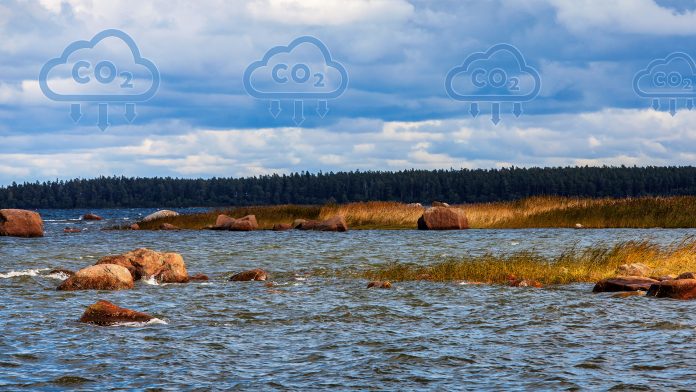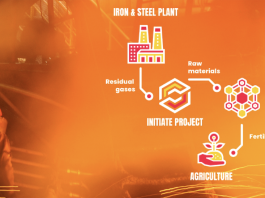The US Government has announced $36m funding for 11 projects across 11 states to accelerate the development of marine carbon dioxide removal capture and storage technologies.
Funded through the Department of Energy’s (DOE) Sensing Exports of Anthropogenic Carbon through Ocean Observation (SEA-CO2) programme, the projects will work to measure and validate the performance of a range of marine carbon dioxide removal technologies.
Leveraging the ocean’s inherent carbon removal abilities is another innovative strategy the US is employing to combat greenhouse gas emissions and achieve a net zero economy by 2050.
US Secretary of Energy Jennifer Granholm highlighted the importance of marine carbon dioxide removal innovation: “Reaching President Biden’s ambitious decarbonisation goals and avoiding the worst impacts of climate change will require a wide range of innovative climate solutions.
“From common-sense approaches like improving energy efficiency to novel applications like utilising the ocean’s natural carbon removal abilities to reduce greenhouse gas pollution from the atmosphere.
“With critical funding from DOE, project teams from across the country will develop groundbreaking new technologies to cut emissions that will help combat the climate crisis while reinforcing America’s global leadership in the clean energy industries of the future.”
What is marine carbon dioxide removal?
Marine carbon dioxide removal solutions utilise the ocean’s natural carbon capture and storage abilities and, when combined with carbon removal techniques, can eradicate millions of tons of CO2 emissions annually.
These technologies are employed across large surfaces or volumes of the ocean over long periods. The SEA-CO2 programme aims to accelerate the scalability and improve the cost-effectiveness of marine carbon dioxide removal technologies to drive climate goals.
What projects have been selected?
The marine carbon dioxide removal project will be managed by the DOE’s Advanced Research Projects Agency-Energy (ARPA-E) and include:
- Atdepth MRV
- Project: Developing an ocean modelling system utilising graphical processing units to significantly enhance simulation modelling speed, surpassing traditional central processing unit methods.
- Grant Amount: $2,524,964
- Bigelow Laboratory for Oceanic Sciences
- Project: Creating a biogeochemical computer model for better understanding the movement of ocean zooplankton and their role in carbon storage in the deep ocean.
- Grant Amount: $2,279,867
- C-Worthy
- Project: Constructing a community framework for model building and data assimilation to facilitate accurate carbon accounting for mCDR, managing model complexity, and integrating observations.
- Grant Amount: $3,884,825
- GE Research
- Project: Developing a fibre optic sensor cable capable of spanning vast ocean volumes and measuring chemical ocean carbon parameters when towed by marine vessels.
- Grant Amount: $4,274,658
- Pacific Northwest National Laboratory
- Project: Creating a model and conducting mesocosm experiments to assess the effectiveness and impact of the Ocean Alkalinity Enhancement technique for marine carbon dioxide removal in major U.S. coastal areas.
- Grant Amount: $2,080,715
- University of Colorado
- Project: Designing a system of optical underwater sensors that use broad-band lasers to detect and measure dissolved carbon compounds.
- Grant Amount: $5,904,233
- University of Pittsburgh
- Project: Developing buoy-based optical fibre sensors to measure pH and carbon dioxide in seawater from the ocean’s surface to the seafloor.
- Grant Amount: $2,274,859
- University of Texas at Austin
- Project: Establishing an acoustic sensor network to quantify ecosystem activity and evaluate carbon storage effectiveness in shallow seagrass beds within the coastal blue carbon cycle.
- Grant Amount: $2,034,903
- University of Utah
- Project: Creating a micro-optical, micro-electronic seafloor probe to extend the longevity and functionality of seafloor carbon storage measurement tools.
- Grant Amount: $2,004,554
- Woods Hole Oceanographic Institution
- Project 1: Developing a system-on-a-chip for ocean carbon flux monitoring, consolidating multiple commercial sensors into a single miniature sensor chip to reduce power requirements and costs for ocean gliders and floats.
- Grant Amount: $3,738,960
- Woods Hole Oceanographic Institution
- Project 2: Designing a natural thorium decay sensor to attach to gliders, autonomous vehicles, and profiling floats for quantifying particulate organic carbon flux rates to the deep ocean for marine carbon dioxide removal.
- Grant Amount: $4,802,245
By proving the viability and potential of these marine CO2 removal technologies, the US will elevate itself closer to achieving its net zero climate ambitions.









